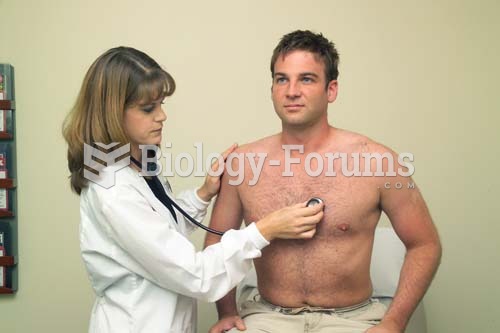|
|
|
Did you know?
Russia has the highest death rate from cardiovascular disease followed by the Ukraine, Romania, Hungary, and Poland.
Did you know?
Your heart beats over 36 million times a year.
Did you know?
The human body produces and destroys 15 million blood cells every second.
Did you know?
Asthma is the most common chronic childhood disease in the world. Most children who develop asthma have symptoms before they are 5 years old.
Did you know?
Increased intake of vitamin D has been shown to reduce fractures up to 25% in older people.







